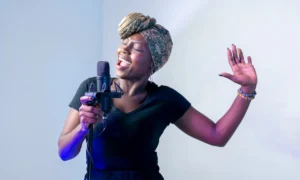Imagine your camcorder as a powerful storytelling tool. The settings are like the dials on a painter’s palette, allowing you to control the look and feel of your video. Don’t worry, we won’t delve into every technical detail – we’ll focus on the big hitters that make the biggest difference.
Exposure, Focus, and White Balance
Think of these three settings as the foundation of any great video. They work together to make sure your footage is clear, properly lit, and portrays colors accurately.
- Exposure: This controls how bright or dark your video appears. It’s like adjusting the amount of light reaching the camera sensor. Imagine a dimmer switch – turning it up lets in more light for brighter videos, while turning it down creates a darker, moodier atmosphere. Most camcorders offer automatic exposure, which works well in most situations. However, you might want to adjust it manually for specific scenarios, like filming a concert where stage lights overpower everything else.
- Focus: This ensures your subject appears sharp and crisp. Most camcorders have autofocus, which works like magic, constantly adjusting to keep your subject in focus. But just like exposure, there are situations where manual focus might be better. For instance, if you’re filming a child running around, autofocus might struggle to keep up. Here, switching to manual focus allows you to lock onto the child and maintain a clear image.
- White Balance: This setting ensures colors appear natural under different lighting conditions. Imagine filming indoors under harsh yellow lights – your video might have an unnatural orange tint. White balance corrects for this, making colors look true-to-life. Most camcorders offer presets for common lighting situations like daylight, fluorescent, or tungsten lights. You can also set the white balance manually for more control.
Exploring Creative Options
Now that we’ve mastered the fundamentals, let’s delve into settings that add a creative flair to your videos.
- Frame Rate: This determines the smoothness of your video. Imagine flipping through a flipbook – the more pages you flip per second, the smoother the animation. Standard frame rates are 24fps (frames per second) for a cinematic look and 30fps for a smooth, realistic feel. Higher frame rates, like 60fps, are great for capturing fast action like sports or wildlife.
- Resolution: This refers to the number of pixels that make up your video. Think of it like the detail on a painting – the higher the resolution, the sharper and more detailed your video will be. Common resolutions include HD (720p), Full HD (1080p), and Ultra HD (4K). While higher resolutions offer stunning detail, they also require more storage space and powerful editing software.
- Aperture: This controls the amount of light allowed into the lens, similar to the pupil of your eye. A wider aperture (lower f-number) lets in more light, blurring the background and creating a shallow depth of field. This is great for isolating your subject from the background. Conversely, a smaller aperture (higher f-number) lets in less light, keeping both the foreground and background sharp. This is ideal for capturing landscapes or group shots.
Pro-Tips and Tricks
- Embrace the Auto Modes: While exploring manual settings is exciting, don’t be afraid to use automatic modes. Most camcorders offer scene modes optimized for specific situations like sports, portraits, or landscapes. These are a great starting point, especially for beginners.
- Invest in a Tripod: Shaky videos can be distracting and ruin the viewing experience. A tripod provides stability, ensuring smooth and professional-looking footage.
- Experiment and Have Fun! Don’t be afraid to experiment with different settings to see what works best for your creative vision. The best way to learn is by doing, so grab your camcorder and start filming!
Remember: There’s no one-size-fits-all approach to camcorder settings. The best settings depend on your specific filming situation and creative goals. With a little practice and this guide as your reference, you’ll be capturing stunning videos in no time!
Exploring Manual Settings
While automatic modes offer convenience, mastering manual settings unlocks the true potential of your camcorder. It allows you to fine-tune the look and feel of your videos, transforming them from ordinary recordings into works of visual art.
- Aperture Priority: This mode gives you control over aperture, letting you adjust the depth of field for creative effects. You choose the aperture, and the camera automatically adjusts shutter speed to maintain proper exposure.
- Shutter Speed Priority: This mode lets you control how long the shutter stays open, affecting motion blur. Choose a faster shutter speed to freeze action or a slower speed to create a dreamy, blurred effect. The camera automatically adjusts aperture to maintain exposure.
- Manual Mode: This mode grants complete control over both aperture and shutter speed, offering the most creative freedom. However, it also requires a firm grasp of exposure to achieve balanced lighting.
Advanced Settings
For those who crave even more control, camcorders offer a treasure trove of advanced settings. These can seem intimidating at first, but with a bit of exploration, they can open up exciting creative possibilities.
- White Balance Presets: While basic white balance presets work well, some camcorders offer advanced options like Kelvin temperature control. This allows you to fine-tune white balance for very specific lighting conditions.
- Picture Profiles: These are pre-defined color settings that affect the overall look of your video. Some profiles offer a flat, neutral look ideal for color grading in post-production, while others offer vivid or cinematic color tones.
- Zebra Stripes: This is a visual aid that helps you avoid overexposure. When enabled, areas of the frame that are too bright will be marked with zebra stripes, allowing you to adjust your settings for balanced exposure.
Composition and Lighting
While mastering settings is crucial, remember that great videography goes beyond technical know-how. Here are some additional tips to elevate your videos:
- Composition: Think about how you arrange elements within the frame. Use the rule of thirds or leading lines to create visually pleasing compositions that guide the viewer’s eye.
- Lighting: Lighting is the cornerstone of any great video. Utilize natural light whenever possible, but don’t be afraid to experiment with artificial lighting for dramatic effects.
Capturing Compelling Footage
Now that you’re armed with a solid understanding of camcorder settings, it’s time to start filming! Here are some practical pointers to get you rolling:
- Planning is Key: Before hitting record, take some time to plan your shots. Storyboard your video or create a shot list to ensure you capture all the necessary footage.
- Start Simple: Don’t overwhelm yourself by trying to master every setting at once. Begin with the basics like exposure, focus, and white balance, and gradually experiment with more advanced options as you gain confidence.
- Practice Makes Perfect: The more you film, the better you’ll become. Grab your camcorder and shoot anything and everything that sparks your creativity. Experiment with different settings and techniques to discover what works best for you.
Also Read: How to Recover Data from a Formatted SD Card?
Conclusion
The world of videography is a vast and exciting realm, filled with endless creative possibilities. By mastering the essential camcorder settings covered in this guide, you’ll be well on your way to capturing stunning videos that tell your stories in a captivating way. Remember, there are no hard and fast rules – experiment, have fun, and most importantly, enjoy the process of creating visual magic!














